Best
AFFORDABL
E MANDOLIN
-
Overall: Bright, Crystal-Clear Tone Exudes In Abundance From A Spruce Top
-
Best Feature: Affordable price point for a quality acoustic-electric mandolin
-
TedScore™: 9/10
Best
OVERALL
MANDOLIN
-
Overall: Solid Maple Back And Sides For A Warm And Resonant Tone
-
Best Feature: Excellent tone and projection and a beautiful finish
-
TedScore™: 8/10
Best
BEGINNER MANDOLIN
-
Overall: Exceptional Dynamics And Warmth Emanate tons
-
Best Feature: Affordable price point for a solid top mandolin
-
TedScore™: 8.5/10

I’m often asked, “Is mandolin harder than ukulele?” – and the answer isn’t so straightforward…
With its eight strings and traditional folk rock bluegrass twang, the mandolin presents a different learning curve. On the other hand, the ukulele, with four strings and a breezy island vibe, is often known as a beginner-friendly option.
So, how do you know which one to get? Which is easier to learn?
Keep reading! This article is specifically written to answer those questions.
Introduction to Stringed Instruments
Stringed instruments are a popular choice for musicians of all levels, offering a wide range of musical styles and versatility.
From the ukulele to the mandolin, these instruments have been a staple in various genres, including folk, classical, and popular music. Each stringed instrument has its unique charm and challenges, making them fascinating to explore.
Whether you’re strumming a ukulele on a sunny beach or picking out a melody on a mandolin in a cozy living room, these instruments bring joy and creativity to your musical journey.

Comparing Ukulele
and Mandolin:
Stringed Instruments
When deciding between the two instruments, consider their physical build and the distinctive sounds they produce.
Both string instruments have unique features that cater to different musical styles and preferences. The soprano ukulele is the most common type among various ukulele models, known for its smaller scale size and compact physical dimensions compared to other versions such as the sopranino, concert, and tenor ukuleles.
Physical Characteristics: Nylon Strings
Your ukulele generally comes smaller, which matters for comfort and playability. It usually has four nylon strings (a G string, a C string, an E string, and an A string), which tend to be softer and more comfortable to play with.
Soprano Ukulele: The soprano ukulele is the most common type, known for its smaller scale size and compact physical dimensions. It is often compared to other versions such as the sopranino, concert, and tenor ukuleles, and holds significant historical roots within the ukulele family.
Concert Ukulele
Tenor Ukulele
Baritone Ukulele
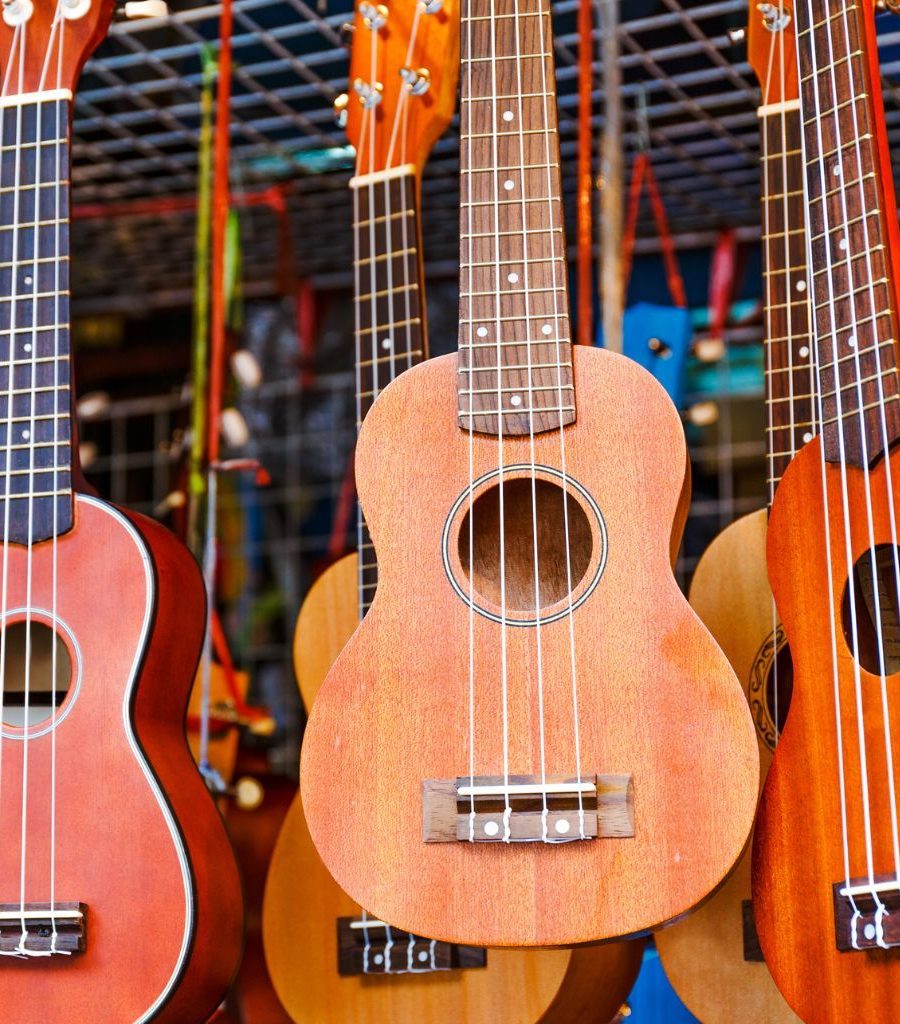

In contrast, the body of a mandolin can be teardrop-shaped (A-style) or ornate with a scrolled body (F-style).
Mandolins have eight strings paired together (These four pairs of strings are also called four courses!), which can produce a fuller, more resonant sound.
Tuning and Sound
Your ukulele strings are typically tuned to GCEA, producing a warm, cheerful tone for strumming chords and simple melodies.
Mandolins, however, are tuned to GDAE, which is the same as a violin and allows for a wider range of notes. This makes them great for playing intricate melodies and fast, dynamic tunes.
The mandolin’s sound is crisp and punchy, cutting through the mix of other instruments, a feature that bluegrass and folk musicians love. Your ukulele’s sound has a mellow tone, resembling the softness of a nylon-stringed classical guitar.
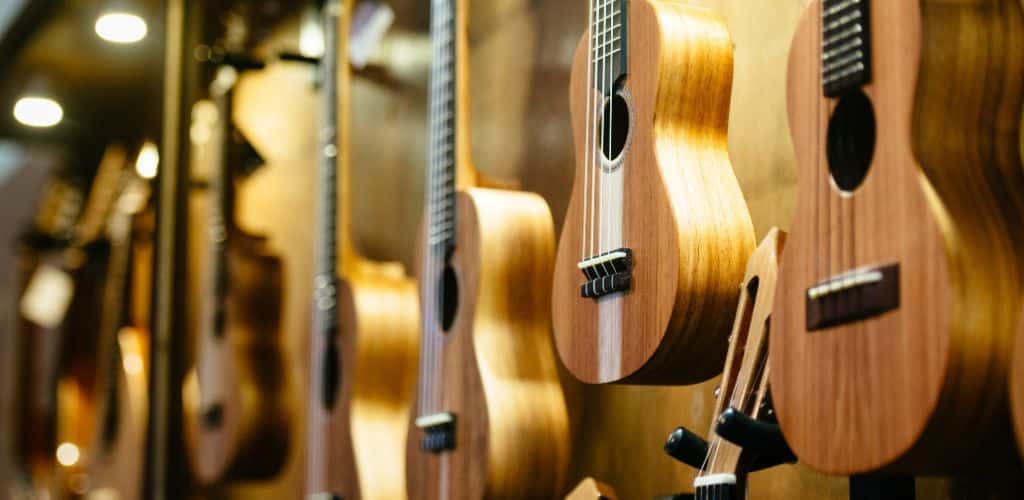

Learning and Playing
Both instruments offer unique challenges and joys to keep your musical instrument journey fresh and exciting.
Ease of Learning

If you’re a beginner, the ukulele will be a welcoming friend. Its four nylon strings are gentler on your fingertips than the mandolin’s eight steel ones.
The ukulele’s standard tuning makes forming chords a breeze. You can play chords for an entire song with just one or two fingers!
The mandolin might seem a bit more intimidating. Those doubled strings make each note ring out with a full, rich sound.
Even though mastering the mandolin chords and plucking might require extra practice, the payoff of that distinctive, crisp sound is well worth the effort.
Techniques and Playing Styles: Mandolin Chords

Strumming away on your ukulele can be as simple as a down-up pattern with your hand. As you advance, you can try complex strum patterns, fingerpicking, and chunking.
Each style influences the texture and mood of your music, perfect for genres like pop, reggae, and even folk music.
Conversely, the mandolin invites you to master techniques like tremolo, a rapid alternation of down and up strokes that makes notes shimmer.
Whether you pick with a plectrum or embrace fingerstyle, adapting to the tighter string tension and closer spacing due to its narrow neck is part of your mandolin quest.
Musical Styles and Versatility
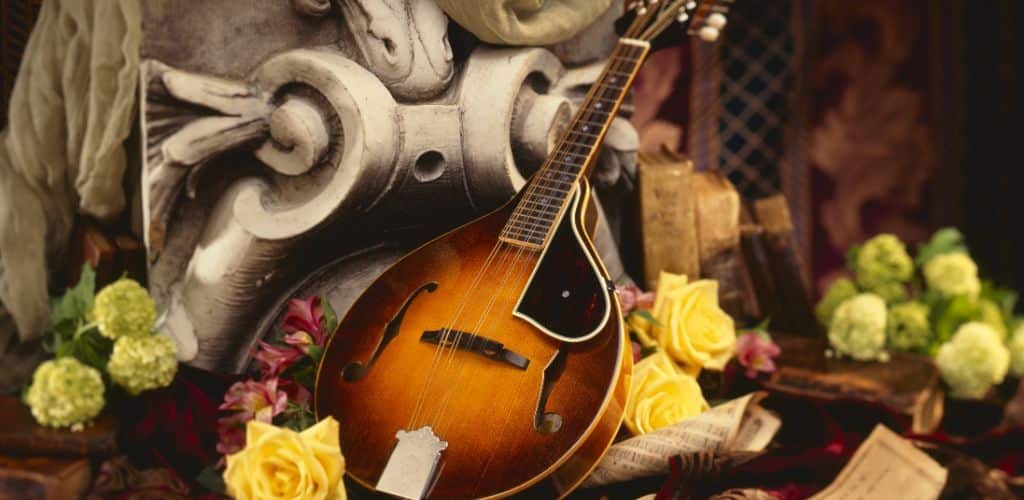
Stringed instruments are incredibly versatile, allowing musicians to explore various musical styles and genres. The ukulele, for example, is often associated with traditional Hawaiian music, but it’s also commonly used in pop, rock, and folk music.
Its light, cheerful sound makes it a favorite for sing-alongs and casual performances. The mandolin, on the other hand, is a staple in bluegrass, country, and classical music.
Its crisp, punchy tone is perfect for intricate melodies and fast-paced tunes.
Whether you’re interested in playing traditional Irish music or modern pop songs, stringed instruments offer a wide range of possibilities, making them a fantastic addition to any musician’s repertoire.
Cost and Accessibility

One of the biggest advantages of stringed instruments is their affordability and accessibility. Ukuleles, in particular, are relatively inexpensive, with beginner models starting at around $20-$50.
This makes them an excellent choice for those just starting their musical journey.
Mandolins, while slightly more expensive, can still be found at affordable prices, with entry-level models starting at around $100-$200. Both instruments are relatively easy to learn, with plenty of online resources and tutorials available to help you get started.
Best Mandolins I Love for Folk Music!
I would love to show you the best mandolins I have played. Maybe you’re interested in checking one out!
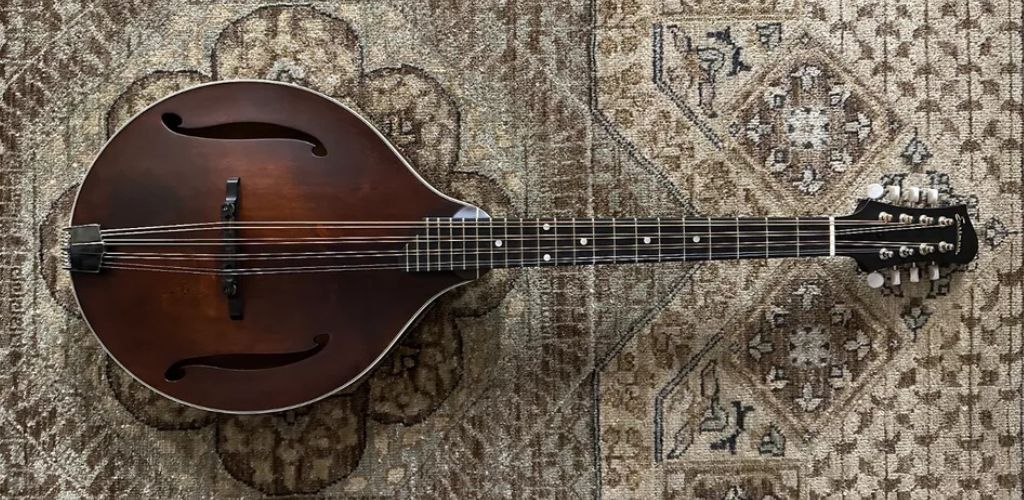
The Eastman MDO305 Octave Mandolin is a beautifully crafted instrument with a rich, warm sound that resonates well, thanks to its F-hole and solid wood construction.
The A-style body is comfortable to hold, and the extended range of the octave tuning adds a captivating depth to my music that is enjoyable to play.
Eastman MDO305 Octave Mandolin, A-Style, F-Holes
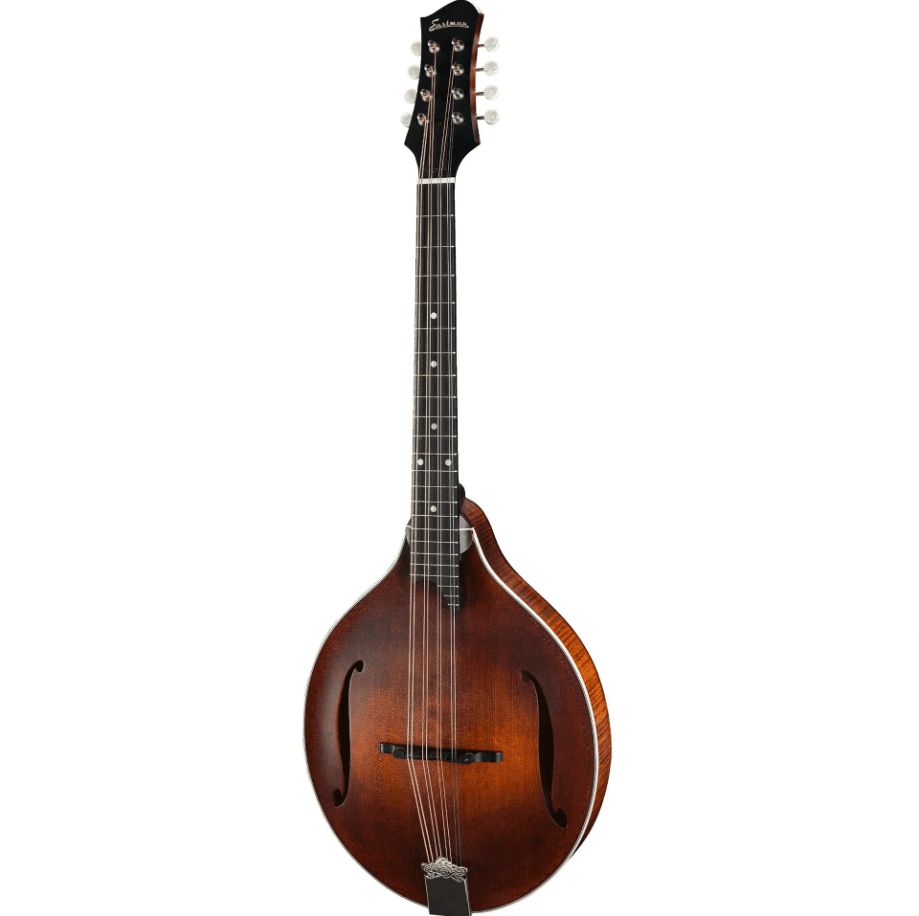
FEATURES: Solid maple back and sides for a warm and resonant tone
OTHER INFO: Adjustable truss rod for easy adjustments to the neck and action
- Excellent tone and projection and a beautiful finish
- Comes with a padded bag for protection during transport
- Higher price point than some other beginner octave mandolins
When you click ‘Check Price’, you’ll see there are loads of great places to buy this item. Our personal favorite is Sweetwater for the US, and Thomann and Gear4Music for the UK & Europe.
They are the largest music retailers, with excellent customer service, competitive prices, really fast shipping, and the longest guarantees.
The professional musician who wrote this article combined many things,
from the product build, manufacturer’s reputation through to feedback
from other users, to create our famous TedScore™.
The Ibanez M510E Electro Acoustic Mandolin in Brown Sunburst offers a crisp, clear sound and the added versatility of an electric-acoustic setup, which amplifies my performances without losing acoustic quality.
The sunburst finish enhances its aesthetic, and the impressive playability makes it a solid choice for beginners and experienced players looking for an affordable, stage-ready instrument.
Ibanez M510E Electro Acoustic Mandolin, Brown Sunburst

FEATURES: Bright, crystal-clear tone exudes in abundance from a spruce top
OTHER INFO: Glide seamlessly across the New Zealand pine fretboard and mahogany neck
- Affordable price point for a quality acoustic-electric mandolin
- Built-in pickup system allows for easy amplification and performance
- Comfortable and easy to play
- Doesn't come with a case or gig bag
When you click ‘Check Price’, you’ll see there are loads of great places to buy this item. Our personal favorite is Sweetwater for the US, and Thomann and Gear4Music for the UK & Europe.
They are the largest music retailers, with excellent customer service, competitive prices, really fast shipping, and the longest guarantees.
The professional musician who wrote this article combined many things,
from the product build, manufacturer’s reputation through to feedback
from other users, to create our famous TedScore™.
The Ozark Mandolin Army and Navy Model boasts a vintage charm and a punchy, bright tone that’s quite appealing for folk and traditional music.
Its lightweight and compact design makes it a joy to play for extended sessions, and it offers good value for those seeking an entry-level instrument with historical character.
Ozark Mandolin Army and Navy Model

FEATURES: Exceptional dynamics and warmth emanate from a solid mahogany build
OTHER INFO: Beautiful aesthetic courtesy of a natural satin mahogany finish
- Affordable price point for a solid top mandolin
- Good sound quality for the price
- May require some setup or adjustments out of the box
When you click ‘Check Price’, you’ll see there are loads of great places to buy this item. Our personal favorite is Sweetwater for the US, and Thomann and Gear4Music for the UK & Europe.
They are the largest music retailers, with excellent customer service, competitive prices, really fast shipping, and the longest guarantees.
The professional musician who wrote this article combined many things,
from the product build, manufacturer’s reputation through to feedback
from other users, to create our famous TedScore™.
Tips for Choosing the Right Instrument
Choosing the right stringed instrument can be a daunting task, especially for beginners. Here are some tips to consider:

If you’re interested in playing traditional Irish music, the mandolin might be the better choice. Its tuning and sound are well-suited for folk and classical genres. If you’re interested in playing pop or folk music, the ukulele might be a better fit with its easy chord shapes and mellow tone.
Ukuleles are generally less expensive than mandolins, but both instruments can be found at affordable prices. Decide how much you’re willing to spend and look for instruments within that range.
If you’re a beginner, you might want to start with a ukulele, which has a softer learning curve. Its nylon strings are gentler on the fingers, and the chord shapes are simpler. If you’re more experienced, you might prefer the mandolin, which offers more complex chord shapes and playing techniques, providing a rewarding challenge.
Common Challenges and Solutions
While stringed instruments are relatively easy to learn, musicians may face some common challenges.
Sore fingers: One of the most common complaints from beginners is sore fingers. To alleviate this, try using a lighter touch, practicing regularly, and using a guitar pick or ukulele pick to reduce finger pressure. Over time, your fingers will build up calluses, making playing more comfortable.
Tuning issues: Both ukuleles and mandolins can be prone to tuning issues, especially for beginners. To solve this, invest in a good tuner, practice tuning regularly, and consider using mechanical tuning machines for easier tuning. This will help you keep your instrument sounding its best.
Chord shapes: Mandolin chords can be complex and challenging, especially for beginners. To overcome this, practice regularly, start with simple chords, and gradually build up to more complex shapes. There are plenty of online resources and tutorials to help you master mandolin chords and improve your playing technique.

Addressing these common challenges can help you enjoy a smoother and more rewarding experience with your stringed instrument, whether you choose the ukulele or the mandolin.
Is Mandolin Harder than Ukulele:
The Final Verdict!
You’re looking at two different instruments when comparing the mandolin to the ukulele.
With its eight strings tuned in pairs, the mandolin requires you to press down two strings simultaneously, which can be challenging for your fingertips.
The ukulele, on the other hand, typically has just four strings. It’s often considered friendlier to beginners with its more comfortable string tension and wider finger spacing.
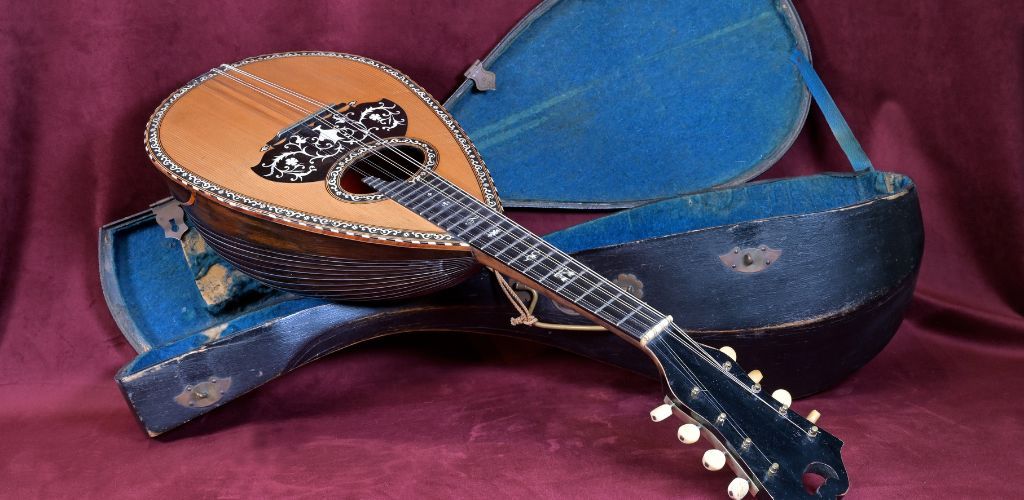
STRINGS: 8 strings in pairs (courses)
TUNING: G-D-A-E (like a violin)
FRETBOARD: Narrow with many frets
TECHNIQUE: Requires a pick; intricate fingering
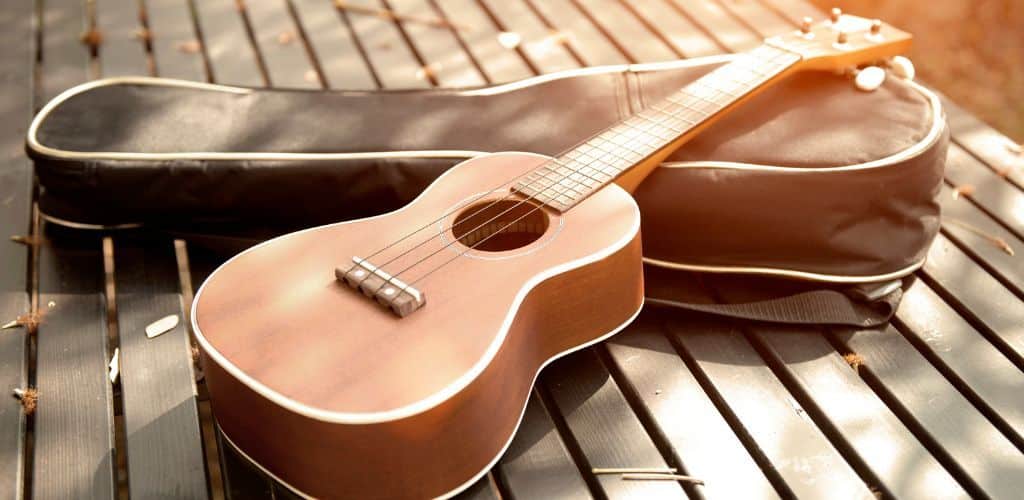
STRINGS: 4 single strings
TUNING: G-C-E-A
FRETBOARD: Wider with fewer frets
TECHNIQUE: Primarily strummed with fingers
Your fingers might initially protest the mandolin’s stiff strings, but they’ll build strength over time. The ukulele might seem like a breeze to strum, with its gentle nylon strings and laid-back vibe inviting you to play.
Playing can be easier on the ukulele, given its simpler chord structures and standard tunings.
Mastery of either of these musical instruments demands practice and dedication, as each has unique quirks and complexities.
Go ahead and pick the one that sings to your heart—you’ve got this!
But wait, there’s more…
If you have decided to learn the mandolin, this next article will help you. You’ll learn the beginner mandolin chords, and you can immediately learn how to play the instrument of your choice. Enjoy!
FAQ's
The ukulele is generally considered easier to play than the mandolin due to its softer nylon strings, simpler chord shapes, and fewer strings.
As a member of the lute family, learning to play the mandolin can be challenging due to its steel strings, which require more finger strength, and the need to learn specific picking techniques, but with practice, many find it rewarding.
While playing the ukulele provides a foundation in stringed instruments, transitioning to the mandolin involves adapting to different instrument configurations, tuning, and playing techniques.
No, the stringed instrument mandolin is not tuned like a ukulele; it is typically tuned in fifths (G-D-A-E) like a violin or guitar family, whereas a ukulele is usually tuned in a re-entrant fashion (G-C-E-A).














Isn’t it a bit oversimplified to say one instrument is harder to learn than the other? It all depends on previous musical background and personal aptitude. Someone with string instrument experience might find the mandolin easier to grasp due to the fretting and string similarities to other instruments like guitar. Yet, someone with no musical background might find the straightforward nature and fewer strings of the ukulele less intimidating as a starting point.
Absolutely spot on with the brand recommendations, Lewis Turner. For anyone diving into folk music, you can’t go wrong with an EASTMAN or IBANEZ. They’ve got a great tone that fits the genre beautifully. For those on the fence about which to get, I’d say consider the type of music you want to play and how the instrument feels in your hands. Each has its unique vibe.
Great comparison between the ukulele and mandolin. As someone who’s played both, I can say that the sound and feel are worlds apart but both have their charm. The mandolin chords might take a bit to get used to for a ukulele player, but it’s worth the effort!
got any tips for a newbie on choosing between these two?
hey, can anyone tell me why the ukulele has nylon strings but not the mandolin? Just wondering.